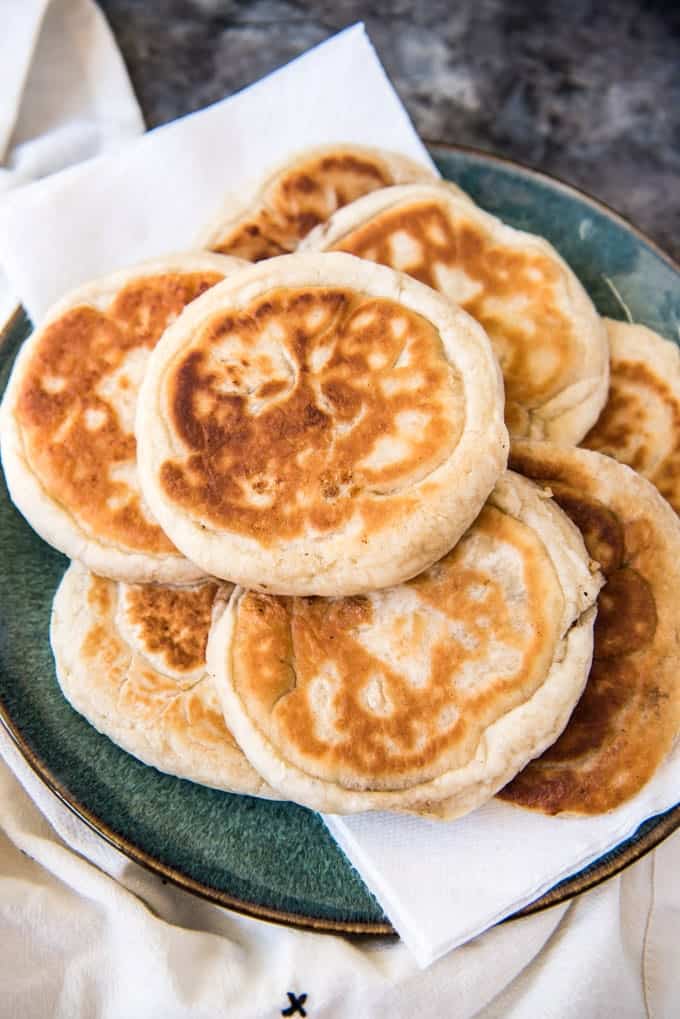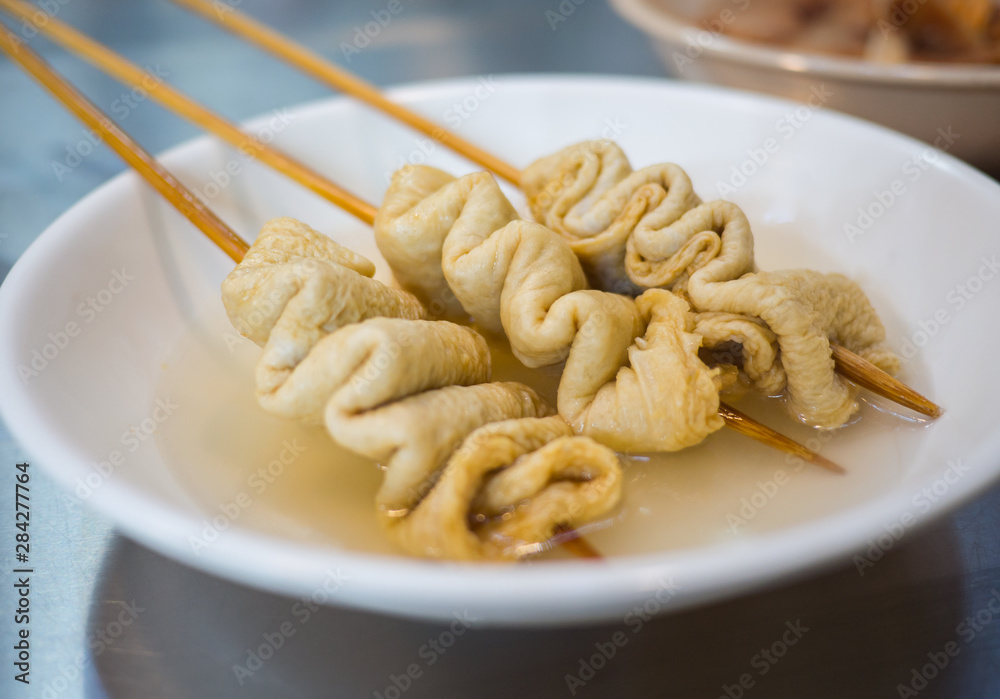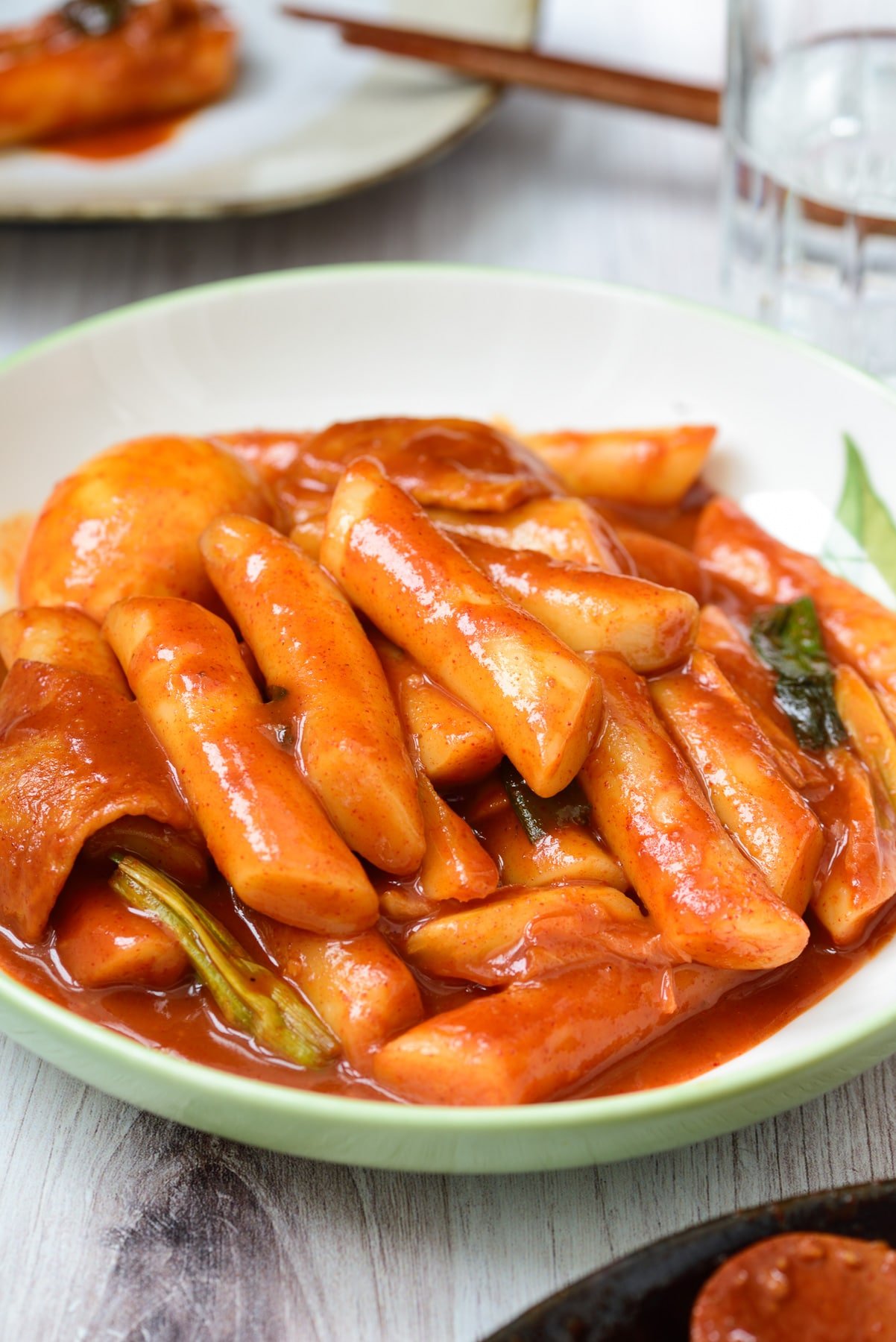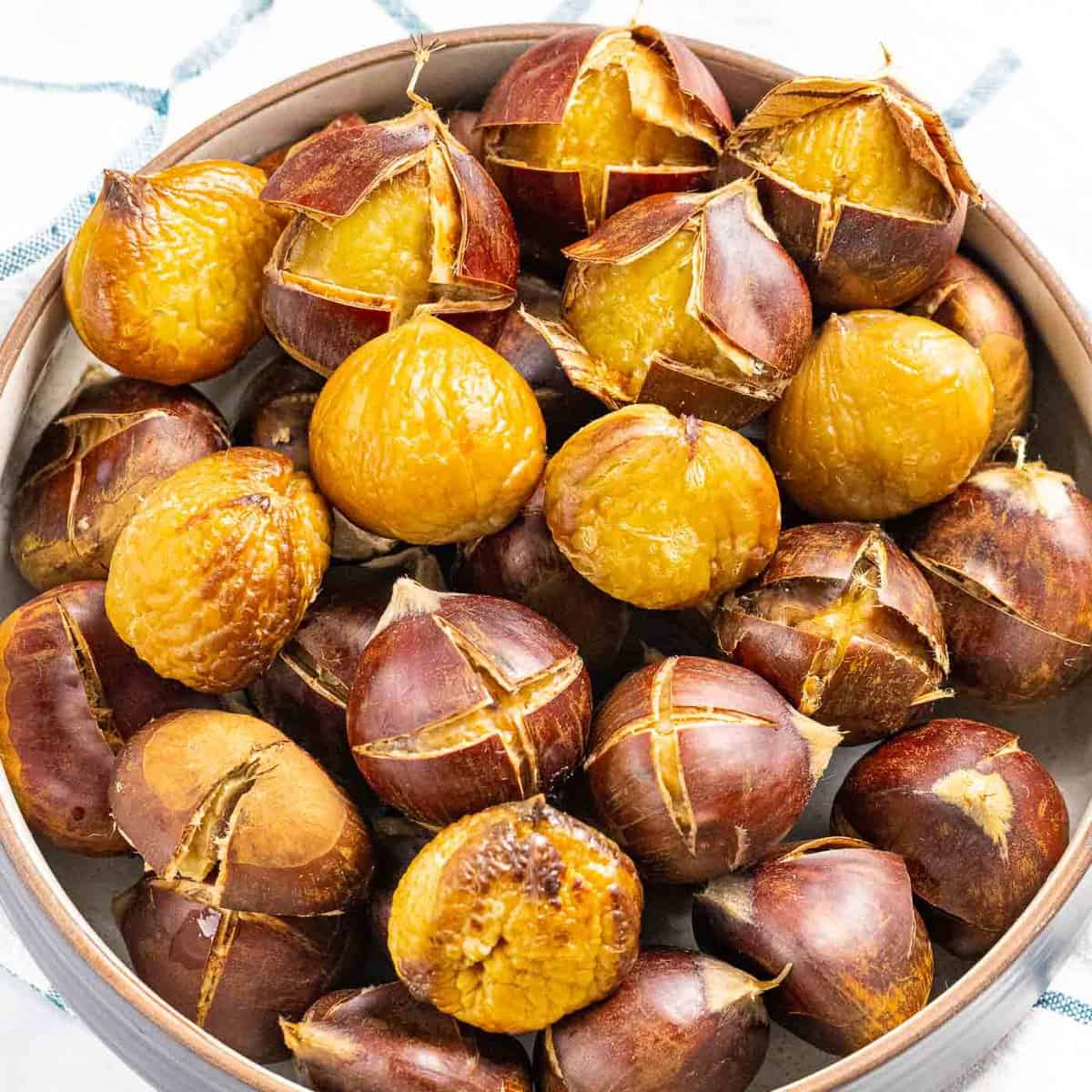Introduction
Winter in Korea is a magical time, and what better way to experience the season than by indulging in the delightful world of Korean street food. The bustling streets come alive with vendors offering an array of winter treats, warming both the heart and soul. In this blog, we embark on a culinary journey through the vibrant streets of Korea, exploring the diverse and mouthwatering winter street food offerings that make this season truly special.
The Crisp Delight of Hotteok

Hotteok, often referred to as Korean sweet pancakes, emerges as a culinary masterpiece when the winter chill sets in. The plummeting temperatures create an insatiable desire for something comforting, and the streets of Korea respond with the delightful warmth of hotteok. Picture a streetside vendor skillfully flipping these golden pancakes on a griddle, and you're in for a sensory delight.
At first glance, hotteok may seem like an ordinary pancake, but a closer look reveals its winter magic. The batter, made from a combination of flour, water, and a pinch of salt, is transformed into a vessel of indulgence through a meticulously crafted filling. The heart of hotteok lies in a gooey amalgamation of brown sugar, honey, chopped peanuts, and a hint of cinnamon. This concoction is the secret sauce that elevates hotteok from a simple pancake to a winter delicacy.
The preparation process itself is a spectacle. The vendor takes a portion of the batter and skillfully molds it into a round shape, ensuring the perfect thickness to achieve that ideal crispy texture. Then comes the pièce de résistance – the generous dollop of the sweet filling. As the hotteok sizzles on the griddle, the filling begins to caramelize, creating a symphony of aromas that waft through the air and beckon passersby.
Once cooked to golden perfection, hotteok is served piping hot, creating a sensory experience that transcends the visual and olfactory realms. The first bite is a revelation – the outer layer is gloriously crispy, providing a satisfying crunch that gives way to the soft and chewy interior. The rich sweetness of the brown sugar and honey dances on the taste buds, while the chopped peanuts add a delightful crunch. Cinnamon, with its warm and comforting notes, ties the flavors together, creating a harmonious blend that captures the essence of winter in every bite.
In the heart of the bustling Korean streets, hotteok stands as a testament to the nation's culinary prowess. It's not just a pancake; it's a manifestation of the season's spirit, a celebration of warmth, and a culinary journey that lingers in the memory long after the winter frost has melted away. So, when the temperatures drop and the yearning for something sweet and comforting intensifies, hotteok beckons, inviting you to savor the magic of Korean winter street food.
Odeng - A Warming Tradition

In the lively tapestry of Korean winter street food, the aromatic allure of odeng stands out as a cherished tradition that has withstood the test of time. Wander through the bustling streets, and you'll find street corners adorned with steaming pots, emanating the inviting fragrance of skewered fish cakes. This iconic scene signals the presence of odeng, a winter delicacy that captures the essence of Korean street food culture.
Odeng, also known as eomuk or fish cake, takes on a unique form when presented as a street food. Vendors expertly thread these fish cakes onto sticks, creating a visually appealing and convenient way to enjoy this flavorful treat while navigating the vibrant street markets. The skewered fish cakes, often lined up in rows, become a feast for the eyes and a testament to the artistry of Korean street food vendors.
What distinguishes odeng is not just its presentation but the immersive experience it offers. The skewers laden with fish cakes are not served in isolation; they are destined for a flavorful dip in a simmering broth. The broth, carefully crafted with a blend of ingredients like anchovies, kelp, and various seasonings, becomes a transformative bath for the skewered fish cakes.
The first bite into an odeng skewer is a harmonious collision of textures and tastes. The fish cake, with its chewy consistency, provides a satisfying resistance to the teeth, while the flavorful broth that clings to it imparts a savory richness. The umami notes from the broth, coupled with the delicate essence of the fish cake, create a symphony of flavors that dance on the palate.
Beyond its delectable taste, odeng holds a special place in the hearts of Koreans as a nostalgic and traditional winter comfort food. Passed down through generations, the enjoyment of odeng on a chilly day is not just a culinary experience; it's a cultural connection to the past, a shared moment that ties communities together.
As you stand on a bustling Korean street corner, watching the steam rise from the pots of odeng, you become part of a timeless tradition. The fragrance in the air, the sight of skewered fish cakes, and the warmth of the flavorful broth create a sensory journey that transcends mere sustenance. Odeng, with its rich history and comforting embrace, is not just a snack on a stick; it's a celebration of Korean culinary heritage that beckons you to savor the warmth of tradition in every flavorful bite.
Tteokbokki - Spicy Rice Cake Extravaganza

Tteokbokki
Embarking on a winter street food adventure in Korea without indulging in the fiery allure of tteokbokki would be akin to missing the heart and soul of the season's culinary festivities. Picture the bustling streets adorned with vendors proudly displaying steaming pots of chewy rice cakes, and you've entered the realm of a quintessential Korean winter experience.
What transforms tteokbokki into a culinary masterpiece is the vibrant red sauce in which the rice cakes luxuriate. Gochujang, the iconic Korean red chili paste, is the fiery backbone of this sauce, creating a perfect harmony of sweet and spicy notes. The sauce is a symphony of flavors, a dance of heat and sweetness that lingers on the palate, inviting you to take another bite and experience the delightful balance once more.
Tteokbokki, however, is not content to stand alone. It often finds companionship in the form of fish cakes, boiled eggs, and ramen noodles. This ensemble of ingredients creates a dish that is not only visually appealing but also a diverse medley of textures and flavors. The fish cakes, with their tender consistency, complement the chewiness of the rice cakes, while the boiled eggs contribute a creamy richness. The addition of ramen noodles introduces an extra layer of heartiness, turning tteokbokki into a complete and satisfying meal.
The allure of tteokbokki extends beyond its taste to the communal experience it fosters. Imagine huddling with friends or family around a steaming pot, eagerly skewering a rice cake and relishing the burst of flavors. Tteokbokki is not just a dish; it's a shared moment, a communal celebration of winter that warms both the body and the soul.
As you delve into a bowl of tteokbokki on a crisp winter day, the heat from the spicy sauce seeps into your being, providing a comforting warmth that radiates from the inside out. It's a sensation that goes beyond the physical – it's a culinary embrace, a reminder that winter in Korea is not just about enduring the cold but savoring the rich and flavorful offerings that make the season truly special.
So, on your winter street food adventure in Korea, don't miss the opportunity to immerse yourself in the hearty goodness of tteokbokki. Let each chewy rice cake coated in fiery gochujang sauce be a celebration of winter's spice and sweetness, a testament to the culinary artistry that defines Korean street food culture.
The Allure of Roasted Chestnuts

Roasted Chestnuts
In the enchanting winter streets of Korea, a timeless aroma beckons passersby, drawing them closer to an age-old delight – the irresistible scent of roasted chestnuts. This classic seasonal treat transcends its culinary roots, becoming a cherished part of the winter experience, evoking a sense of warmth and nostalgia in every crackle and pop.
As you weave through the lively markets and bustling streets, the air becomes saturated with the earthy fragrance of chestnuts roasting over an open flame. Vendors, their makeshift stalls adorned with piles of chestnuts and wafts of steam rising into the crisp air, create an inviting atmosphere that captivates both locals and visitors alike.
The process of roasting chestnuts is a spectacle in itself. The chestnuts, their hard shells cracked open, rest on the grates of open fires or specialized chestnut roasting machines. The flames impart a gentle smokiness to the chestnuts, and the heat gradually transforms their starchy interior into a tender, flavorful delight. The crackling of the shells and the subtle hiss of steam create a symphony of sounds that harmonizes with the lively energy of the winter streets.
The allure of roasted chestnuts lies not only in their preparation but also in the sensory experience of enjoying them. Picture holding a warm paper cone filled with these golden-brown gems – each chestnut nestled in its own pocket of warmth. The act of peeling away the charred outer layer reveals the smooth, velvety flesh inside. The warmth emanating from the freshly roasted chestnut is not just physical; it's a comforting embrace that resonates with the season.
The first bite is a revelation of flavors – a delicate sweetness intermingled with a nutty richness. The texture is both creamy and firm, creating a satisfying contrast that elevates the humble chestnut into a culinary delight. The warm, nutty aroma envelops your senses, offering a momentary escape from the winter chill.
Roasted chestnuts are not merely a snack; they are a portable source of comfort, a hand-held indulgence that accompanies you on your winter journey through the vibrant streets of Korea. As you stroll, savoring each chestnut, the experience becomes more than just a culinary adventure – it's a connection to tradition, a celebration of seasonal abundance, and a reminder that joy can be found in the simplest of pleasures.
Gyeran Bbang - Portable Egg Bread

Gyeran Bbang
In the quest for a delightful winter snack in Korea, gyeran bbang emerges as the answer, offering a perfect blend of convenience and deliciousness. Translated as "egg bread," gyeran bbang is a small yet satisfying treat that captures the essence of comfort in every bite. As you traverse the winter streets of Korea, the aroma of these freshly baked egg breads invites you to indulge in a culinary experience that marries simplicity with indulgence.
The allure of gyeran bbang lies in its uncomplicated yet ingenious preparation. Picture a small cake, perfectly sized for a handheld delight, baked to a golden perfection. What sets it apart is the crowning jewel – a whole egg placed on top of the soft, fluffy cake before it enters the oven. This seemingly simple addition transforms the ordinary into the extraordinary, creating a visual and gustatory feast.
The first encounter with gyeran bbang is a tactile experience. The cake, soft and slightly spongy, yields to the gentle pressure of your fingers. As you take your first bite, the outer layer offers a subtle resistance before giving way to the pillowy softness within. The magic, however, unfolds with the encounter with the egg. The creamy yolk, still slightly runny, enriches each bite with a luxurious and comforting texture that coats the palate.
Gyeran bbang is not just a snack; it's a portable indulgence that complements the winter chill. As you hold the warm cake in your hands, the heat radiates through, providing a respite from the cold. The combination of the soft cake and the creamy yolk becomes a comforting harmony that warms you from the inside out, making it an ideal companion for a brisk winter day.
Beyond its culinary appeal, gyeran bbang holds a special place in the hearts of locals and visitors alike. The act of peeling away the paper wrapper, revealing the golden cake crowned with a sunny egg, creates a moment of anticipation and joy. It's a simple pleasure that transcends cultural boundaries, inviting everyone to partake in the delight of this beloved street food.
The convenience of gyeran bbang makes it a versatile snack – perfect for on-the-go munching or a leisurely stroll through the winter markets. Whether enjoyed as a quick pick-me-up or a comforting treat during a chilly afternoon, gyeran bbang stands as a testament to the ingenuity of Korean street food, where simplicity and creativity converge to create an experience that is both accessible and indulgent.
So, for those in search of a winter snack that embodies comfort and convenience, gyeran bbang beckons, promising a symphony of textures and flavors that encapsulate the warmth and coziness of the season. Allow yourself to be enveloped in the simplicity and satisfaction of this egg-topped delight, savoring each bite as a respite from the winter chill.
Bungeoppang - Fish-Shaped Sweet Delights

In the enchanting world of Korean winter street food, Bungeoppang takes center stage, captivating hearts with its unique charm and delectable flavors. Translated as "fish-shaped bread," Bungeoppang is a winter delicacy that seamlessly blends tradition and innovation, creating a treat that beckons locals and visitors alike to indulge in its culinary allure.
At first glance, Bungeoppang is a visual spectacle. The pastry is meticulously crafted into the shape of a fish, complete with intricate detailing that mimics the scales and fins. The crisp exterior, golden and perfectly shaped, hints at the delightful experience that awaits within. It's not just a pastry; it's a work of art that adds a touch of whimsy to the winter streets of Korea.
The magic of Bungeoppang, however, lies in the symphony of textures and flavors that unfold with each bite. The first encounter is with the crispy outer shell, which shatters delicately under the teeth, offering a satisfying crunch that gives way to the warm embrace of the gooey red bean filling. This sweet and velvety filling, made from adzuki beans, sugar, and sometimes a hint of salt, provides a delightful contrast to the pastry's crunchiness.
The combination of textures – the delicate crispness of the pastry and the lusciousness of the red bean filling – creates a sensory experience that transcends the ordinary. Bungeoppang is not just a treat for the taste buds; it's a journey of tactile delight, a dance of contrasts that harmonize to create a memorable indulgence.
Bungeoppang's popularity is not limited to its visual appeal and textural delights; it also taps into the rich tapestry of Korean culinary tradition. The use of red bean paste, a staple in Korean desserts, connects this modern street food delight to centuries-old recipes, infusing it with a sense of heritage and authenticity.
As you navigate the winter streets of Korea, the aroma of freshly baked Bungeoppang wafts through the air, creating an irresistible invitation to partake in this seasonal joy. The fish-shaped pastries are often prepared on the spot by skilled vendors, ensuring that each batch is served warm, enhancing the overall experience.
This beloved winter street food has become a favorite not only for its delectable taste but also for the sense of joy and nostalgia it evokes. Locals reminisce about childhood winters spent enjoying Bungeoppang, and for visitors, it's an introduction to the warmth and creativity that defines Korean street food culture.
In essence, Bungeoppang is more than a snack; it's a celebration of winter, a testament to the ingenuity of Korean culinary craftsmanship, and a must-try for anyone seeking to explore the diverse and delightful world of Korean winter street food. So, as the cold winds sweep through the streets, let the fish-shaped pastries lead you on a journey of flavor, tradition, and the simple joy found in every bite.
Chestnut Ddeok - A Twist on Tradition

In the heart of Korean cuisine, where tradition meets innovation, rice cakes, or ddeok, hold a revered place. As winter descends upon the bustling streets, chestnut ddeok emerges as a star, a seasonal twist on this timeless delicacy that captivates palates and evokes the warmth of the season.
Ddeok, with its roots deeply embedded in Korean culinary heritage, is a staple enjoyed throughout the year. However, when winter arrives, the spotlight shifts to chestnut ddeok, a variation that transforms the familiar into something extraordinary. This winter delicacy embodies the spirit of the season, merging the comforting familiarity of rice cakes with the subtle sweetness of chestnuts.
The preparation of chestnut ddeok is a labor of love and craftsmanship. The rice flour, water, and other essential ingredients are meticulously blended to create a soft, pliable dough. What sets chestnut ddeok apart is the infusion of chestnut essence, adding a layer of complexity and seasonal charm to the traditional recipe. The chestnuts, with their inherent sweetness, provide a delightful counterpoint to the neutral canvas of the rice cake.
The result is a sensory masterpiece – each bite reveals a harmonious fusion of textures and flavors. The rice cake, soft and slightly chewy, cradles the sweet essence of chestnuts, creating a symphony that unfolds with every morsel. The chestnut's subtle sweetness permeates the ddeok, offering a nuanced and layered experience that reflects the creativity of Korean culinary artisans.
The enjoyment of chestnut ddeok extends beyond its delectable taste; it is a celebration of winter's bounty and a connection to the cultural tapestry of Korea. The incorporation of chestnuts, a seasonal treasure, showcases not only the adaptability of traditional recipes but also the resourcefulness of street food vendors in crafting unique and enticing offerings.
Whether savored as a snack on a chilly afternoon stroll or presented as a delightful conclusion to a winter meal, chestnut ddeok invites all to partake in its seasonal magic. It bridges the gap between tradition and innovation, offering a taste of the past with a touch of contemporary flair.
In the vibrant landscape of Korean street food, chestnut ddeok shines as a winter delicacy, inviting locals and visitors alike to savor the rich and inventive flavors that define the season. As you explore the lively winter streets of Korea, let chestnut ddeok be your guide, leading you on a culinary journey that encapsulates the creativity, warmth, and deliciousness of Korean winter street food.
Conclusion
Korean winter street food is a culinary adventure that tantalizes the taste buds and warms the soul. From the comforting hotteok to the fiery tteokbokki and the sweet indulgence of bungeoppang, each bite tells a story of tradition, innovation, and the joy of winter festivities. As you navigate the lively streets of Korea during the colder months, make sure to savor these delightful treats, creating memories and experiences that will last a lifetime.
Image credits:
https://houseofnasheats.com/wp-content/uploads/2018/02/Hotteok-Korean-Sweet-Pancakes-14.jpg
https://as2.ftcdn.net/v2/jpg/02/84/27/77/1000_F_284277764_COxPnzpl6yPDkGenwjv7XelLZ7nNGKyJ.jpg
https://img.taste.com.au/Hr_oChz-/w720-h480-cfill-q80/taste/2022/08/gyeran-bbang-egg-bread-180792-2.jpg
https://www.koreanbapsang.com/wp-content/uploads/2018/09/DSC4637-4.jpg
https://drivemehungry.com/wp-content/uploads/2022/09/roasted-chestnuts-5.jpg
https://recipes.net/wp-content/uploads/2021/12/korean-fish-shaped-pastry-bungeoppang-recipe-scaled.jpg
https://www.maangchi.com/wp-content/uploads/2014/01/chestnut-cookies.jpg






